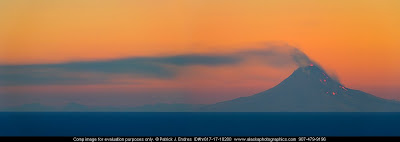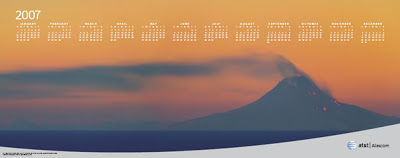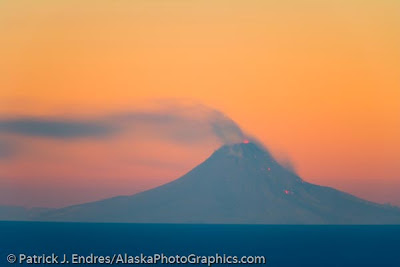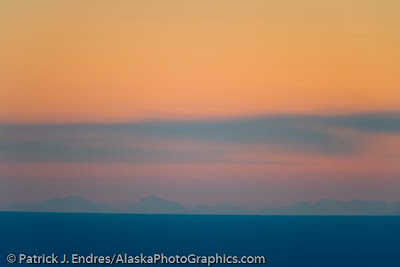March 14, 2006 brought clear skies to southcentral Alaska, and I ventured to Homer to attempt some photography of Mt. Augustine volcano for a book project. I was aware of the volcano activity but really have to thank a friend and colleague Calvin Hall, who had sent me some inspirational images of the volcano he had taken the previous week. From a roadside lookout just outside of Homer, you can see the volcano on a clear day, approximately 75 miles away. I waited until the sun had set and the ambient light dropped low enough to let the “lava” or technically called “incandescence” glow with the help of a long exposure. You could not really see it with the naked eye. I’ve learned from my dusk to dawn photography experience that you can end up with unusual visual discoveries when looking at images made with lengthy exposures. This is particularly true with the Aurora borealis.
Long exposures with a telephoto lens require extreme tripod stability to prevent camera movement blur. I used a 500mm lens with a 1.4x converter (equivalent of 700mm) on a sturdy Gitzo tripod with a RRS panorama swivel ballhead. After taking the first frame and checking the histogram very carefully, I swung the camera to the left for the second frame allowing about 1/3 to 1/2 overlap. The exposure time was 95 seconds for the first frame and 102 seconds, for the second one (I added a little more time to compensate for the slightly darkening sky). With a total exposure time for the scene at about four minutes, there was not much time for experimenting. Throw in a test shot or two before hand, and timing becomes critical. You can see more photos of the volcano on my site: Mt. Augustine volcano photos










